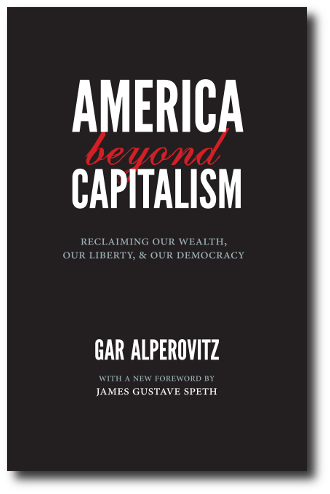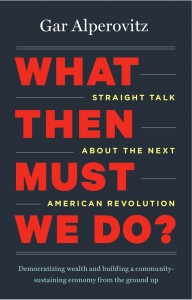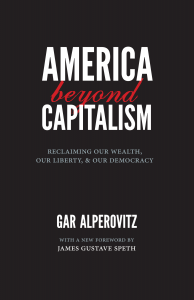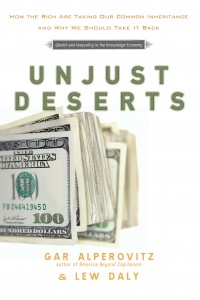My latest opinion piece on alternatives to municipal austerity ran in the print edition of today’s Baltimore Sun:
City finances have long been under pressure, but the Great Recession and steady attacks on federal and state spending have compounded local financial difficulties. The National League of Cities’ annual research brief, City Fiscal Conditions, documents rapid deterioration. Reported revenue declines of 2.5 percent in 2009 and 3.2 percent in 2010 were unprecedented in severity in the 25-year history of the survey. In 2010, 79 percent of cities reported cutting personnel, 44 percent cut services, 25 percent cut public safety spending, and 17 percent cut current employees’ health benefits. Expectations going forward are even more downbeat.
Hard times call for new thinking. We are going through a systemic crisis, not simply a political crisis, and the assumptions of the last three decades about the relationship among politics, social and economic programs, and the economy are now obsolete. Cities everywhere can find surprising answers to fiscal difficulties by looking to scores of little-known innovative strategies under way in diverse communities across the nation.
The economic crisis has, for instance, produced widespread interest in the Bank of North Dakota, a highly successful state-owned bank founded in 1919. Over the past 14 years, the bank has returned $340 million in profits to the state, with broad support in many cities from the business community as well as progressive activists. Elsewhere, cities from Lowell, Mass., to Berkeley, Calif., have discovered they can make better use of the millions of dollars that temporarily sit in bank accounts by choosing where to place deposits based on banks’ willingness to re-lend those dollars to meet local community development goals. This strategy can stimulate local economic development without placing new burdens on taxpayers.
Another promising direction is generating revenue through direct city ownership of land and businesses. What might once have been called “city socialism” is now commonly dubbed “the enterprising city,” with Republican and Democratic mayors alike involved in efforts ranging from land development to Internet and wi-fi services. In many cities, profits from municipally owned electric utilities also help finance other services and thus reduce the tax burden. In Los Angeles, for example, the Department of Power and Water contributes about $190 million per year to the city’s revenues.
Still other cities have created new businesses to promote local economic development. Hundreds of municipalities, for instance, generate revenues through landfill gas-recovery, turning the greenhouse gas methane (a byproduct of waste storage) into energy. Others have established programs to make equity (venture capital) investments in local firms and share in their success. San Diego, for instance, has invested $2.5 million in an “emerging technology” fund targeting small businesses in low-income communities. In 2011, Maryland Gov. Martin O’Malley restarted a similar program, the Maryland Venture Fund, which had previously returned $61 million to the state on the $25 million it had invested it local companies.
At present, city and state governments spend roughly $60 billion on economic development incentives (tax abatements, tax-increment-finance bond financing and the like). Much of this spending is pure folly: Maryland’s $44 million retention subsidy to Marriott in 1999, awarded after the company had already decided not to relocate, is a particularly egregious example. A 2002 study of the Connecticut Development Agency found that companies benefiting from government subsidies “had created only 9 percent of the jobs they had forecast” and that the average subsidy for each new job was $367,910. Nonetheless, for a politician on a two- or four-year electoral cycle, such “easy remedies” are all too tempting. Similarly, some mayors and governors have sold off public assets, sacrificing long-term fiscal sustainability for short-term gains.
A more sensible municipal development agenda might leverage still other public assets to nurture the local economy. For instance, the ability of city governments to use the municipality’s purchasing power to keep business dollars circulating locally is vastly under-appreciated. Used wisely, city purchases can provide a revenue-neutral way of supporting the development of community-anchored businesses: directing city contracts to companies structured in ways that keep jobs in the city.
A new model of anchored ownership in Cleveland suggests what can be done: The purchasing power of the city’s existing “anchors” — hospitals, universities and local government itself — is used to provide a long-term market for a network of green worker cooperatives in some of the city’s lowest-income neighborhoods. This not only provides “anchored” jobs but also builds the tax base and reduces the demand for city social services.
Cities could take an even more active role in fostering this kind of development. A municipality, for instance, could use money currently raised through tax increment financing (TIF) and other mechanisms that now support relocation incentives to instead support a “Cleveland model” approach, reducing government expenditures and raising local tax revenues at the same time.
In an age of increasing fiscal crisis, comprehensive city-level economic planning that draws on the new strategies being refined around the nation — together with similar initiatives at the regional and national levels — may offer the only way out of the trap of disinvestment, austerity, and a failing and negative municipal politics that pits taxpayers against public employees in so many of the nation’s communities.
Gar Alperovitz is the Lionel R. Bauman Professor of Political Economy at the University of Maryland and the co-founder of the Democracy Collaborative. His latest book is “America Beyond Capitalism: Reclaiming Our Wealth, Our Liberty, and Our Democracy.” His website is garalperovitz.com.
 AMERICA BEYOND CAPITALISM
AMERICA BEYOND CAPITALISM




 Agenda
Agenda  Posterboard
Posterboard 